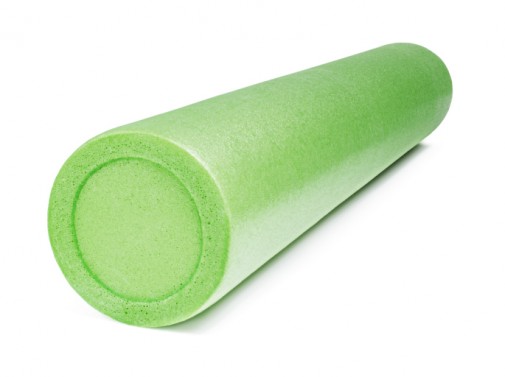Why you should try foam rollers

If you are looking to decrease muscle soreness or just to cool down after your workout, give foam rolling a try.
This “mini-massage” is a great way to help your muscles recover.
Here are a few simple tips so that you can get the most out of foam rolling:
- Choose the foam roller that’s right for you –There are two types of rollers: foam rollers that are typically the larger of the two, and plastic rollers that are smaller and look like a rolling pin. Larger rollers will target a wider area, while the smaller plastic rollers let you focus on smaller groups of muscles.
- What muscles can you target – Foam rollers can work on all muscles, including your back, arms, hips and legs. For runners, the IT band is a popular place to roll, as it is often sore and rolling can help loosen it up. In addition, quadriceps, hamstrings, hips and calf muscles can be rolled out after a long run.
- Using Styrofoam rollers – When using a Styrofoam roller, place the roller on the floor and place the muscle you are massaging on top of the roller. For calves and hamstrings, it is helpful to sit down. For your quadriceps, it is often easier to lay on the roller, and for hips, rolling from your side is most effective. Apply pressure and roll several times. You should feel some pressure, but there should not be any pain.
- Using plastic rollers – Hold the roller in your hands and press down on the sore muscle. In most cases, this is easier to do from a seated position. Just like the large roller, make sure you feel pressure but not pain.
- Foam rollers for injuries –If you are injured or feeling particularly sore, be careful around tender areas.
Related Posts
Comments
About the Author
Dr. Philip Skiba is a world-renowned expert in elite athletic performance. His practice focuses on the non-surgical management of sports injuries, as well as athlete training, health, rehabilitation and wellness. He works clinically, on the sidelines, and in the training rooms with high school, collegiate and professional athletes. Dr. Skiba has an extensive research program which focuses on oxygen use and the determinants of athletic performance. His work has been used by athletes in amateur and elite sports on a regular basis, including the 2012 Olympic Games. Notably, Dr. Skiba has also coached a number of national champion, world-class and World Champion triathletes.

















